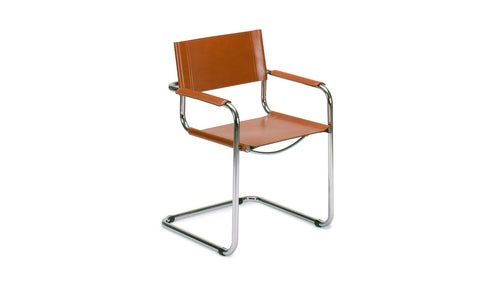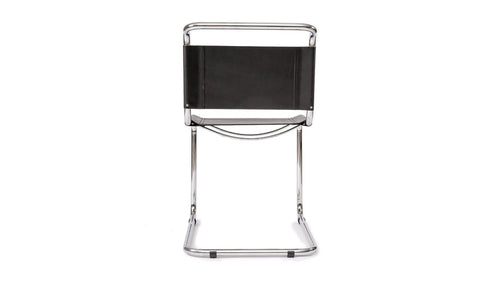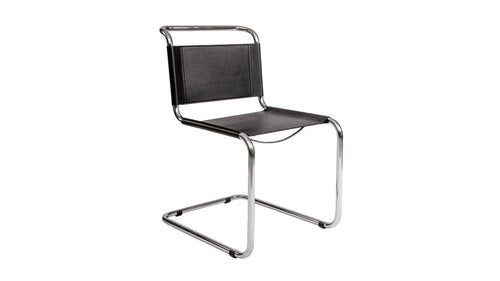Mart Stam
M. Stam
(1899-1986)
Choosing the materials is half the job done; using them is the other half. Dutch architect, designer and urban planner, Mart Stam is an important figure for the urbanistic theories of the Modernism. As an exponent of the left wing of the movement, he supported particularly new ethical and social positions in architecture. To create a chair without back legs, that was functional, light and practical, beginning from 1926, Stam began working with lengths of thin standard gas pipe. This was the first cantilever chair, exploiting the tensile properties of steel, that would become a benchmark in the history of furniture design. The artistic copyright for the cantilever chair was attributed to Stam in 1932, after a long patent dispute with Mies van der Rohe and Breuer. Stam was an honorary member of the Bauhaus since1928, giving a valid artistic contribution in the field of furniture design. Stam interests were, however, increasingly directed to houses and cities design, such as the renowned townhouses of the Weissenhof district in Stuttgart. He worked as an urban planner in Russia and Rotterdam, and finally on the Dresden reconstruction, after World War II.
Choosing the materials is half the job done; using them is the other half. Dutch architect, designer and urban planner, Mart Stam is an important figure for the urbanistic theories of the Modernism. As an exponent of the left wing of the movement, he supported particularly new ethical and social positions in architecture. To create a chair without back legs, that was functional, light and practical, beginning from 1926, Stam began working with lengths of thin standard gas pipe. This was the first cantilever chair, exploiting the tensile properties of steel, that would become a benchmark in the history of furniture design. The artistic copyright for the cantilever chair was attributed to Stam in 1932, after a long patent dispute with Mies van der Rohe and Breuer. Stam was an honorary member of the Bauhaus since1928, giving a valid artistic contribution in the field of furniture design. Stam interests were, however, increasingly directed to houses and cities design, such as the renowned townhouses of the Weissenhof district in Stuttgart. He worked as an urban planner in Russia and Rotterdam, and finally on the Dresden reconstruction, after World War II.




